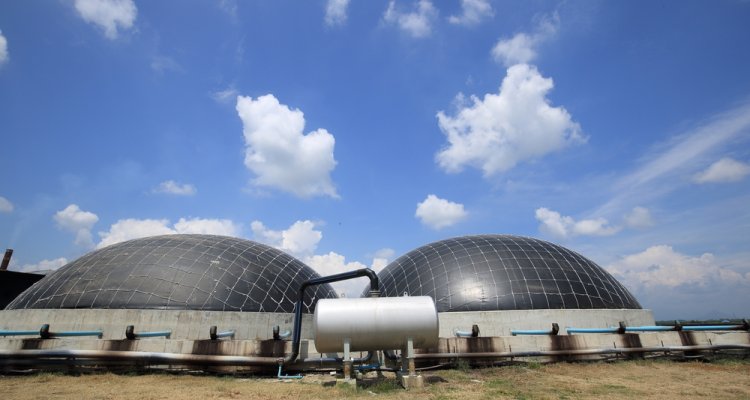
News
Fishing for valuable biobased elements in the biomass soup
“Biomass is a soup that has a different flavour every time,” said Harry Bitter this spring during his inaugural speech as Professor in Biobased Commodity Chemistry at Wageningen UR. With his experience in the field of catalysts, Bitter hopes to isolate useable biobased materials. He sees opportunities for chemicals in particular.
Biomass is not simply a ready-made valuable pharmaceutical product, medicine, solvent or oil. Biomass is wet, often contains carbon and hydrogen as well as oxygen and nitrogen, and its composition changes every year. The expectations are high for an economy that no longer relies solely on fossil fuels but instead transitions towards renewable raw materials from biomass. “The potential is there,” says Professor Bitter. “But we still have to realise it.” And he does not only mean economically and socially, but also scientifically: “Lots of research is still required as we are far from knowing and understanding everything.”
Search for useful catalysts
Harry Bitter (1969) is a down-to-earth scientist who sees that science has already made considerable steps. Through fermentation, sugar from, for instance, beet is already being made into lactic acid which can be used to produce bio-plastics. “We are getting better and better at this, and the coffee no longer leaks through the cups.” The same applies to succinic acid, another top ten biobased chemical, which can be used to convert sugars (again from products like beets) into products including solvents. In the case of the wood-like substance lignin, however, the issue is more complex and requires further research. While lignin is sometimes described as a treasure chest of valuable raw materials, there are good reasons why nature takes years to break down a dead tree trunk.
Bitter’s search comprises research into possible auxiliary substances which he can use to crack the lock of the lignin treasure chest, among other things. “Catalysts are a good example,” he continues. “Without being used themselves, they aid chemical conversion reactions which convert or extract the desired biobased materials from their structure.”
Chemicals as most favourable market
Catalysts are mainly known as the surfaces of mostly precious metals at the nano scale, which have been used for the past twenty years to accelerate the breakdown of harmful nitrogen oxides from car emissions. There is also a wealth of applications in industrial process technology. Harry Bitter is an old hand in the mysterious world of catalysts. He studied chemistry in Nijmegen, obtained his doctoral degree on catalysation in Twente, and then became lecturer at Utrecht University. After many years of research into petrochemical applications, Bitter started focusing on developing chemical catalyst technologies for converting biomass into renewable building blocks for chemistry via the Dutch public-private partnership ‘Catchbio’.
The production of (basic) chemicals is the most favourable market for biobased applications, according to Bitter. “Although pharmaceutical substances are more valuable, the market for them is only small. In contrast, bio-fuels represent a big market with a small value. Biobased chemistry has good added value and therefore falls right in the middle,” Bitter explains.
Linking market-oriented and fundamental research
The new Professor is actually a catalyst himself as Bitter will be linking two chair groups (following the recent retirement of Professors Gerrit van Straaten and Johan Sanders). The Biomass refinery and process dynamics group will in time merge with Biobased commodity chemistry. “Biobased chemistry and technology is our new name,” Bitter reveals.
He hopes to merge the more market-oriented research with fundamental research, citing the example of the pressing of sunflower seeds into oil. “The bitter press cake remains from this process are used as animal feed. The chlorogenic acid it contains is not used by the animals, however. With extraction techniques and catalysts, we can extract that substance to use it to produce substances such as biobased solvents. This is a combination of scientific research and applied research that is usually performed by companies.”
TIPTOP chemistry
Wageningen UR is the place to be for such research according to Bitter. “We have a large range of applicable knowledge here regarding the influence of dry and wet seasons, fertiliser amounts and rotation cultivation on, say, the composition of the level of chlorogenic acid in sunflowers, the starch concentration in potatoes or the sugar percentage in beets. And the breeding of agricultural crops is also important.” TIPTOP chemistry, he calls it: ‘Turning variable InPut to Tailored OutPut’.
Within the new chair group, Bitter will use fundamental insights for applications. “This way we can achieve synergies between the various research lines of the university, research institutes and the industry.”